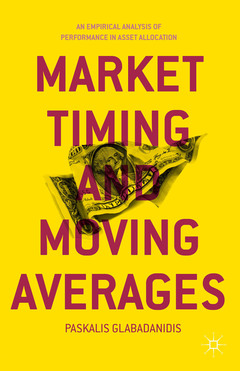Description
Market Timing and Moving Averages, 2015
An Empirical Analysis of Performance in Asset Allocation
Author: Glabadanidis P.
Language: English
Subjects for Market Timing and Moving Averages:
Publication date: 07-2015
177 p. · 14x21.6 cm · Hardback
177 p. · 14x21.6 cm · Hardback
Description
/li>Contents
/li>Biography
/li>
There is a prevailing view among researchers and practitioners that abnormal risk-adjusted returns are an anomaly of financial market inefficiency. This outlook is misleading, since such returns only shed light on the imperfect models commonly used to measure and benchmark investment performance. In particular, using static asset pricing models to judge the performance of a dynamic investment strategy leads to flawed inferences when predicting market indicators. Market Timing and Moving Averages investigates the performance of moving average price indicators as a tactical asset allocation strategy. Glabadanidis provides a rationale for analyzing and testing the market timing and predictive power of any indicator based on past average prices and trading volume. He argues that certain trading strategies are best implemented as a dynamic asset allocation without selling short, in turn achieving the effect of an imperfect at-the-money protective put option. This work contains an empirical analysis of the performance of various versions of trading strategies based on simple moving averages.
1. Fundamental versus Technical Analysis 2. Investment Performance 3. Performance Drivers 4. Performance Sensitivity 5. Individual Securities 6. Concluding Remarks
Paskalis Glabadanidis is Senior Lecturer in Finance at the University of Adelaide.
© 2024 LAVOISIER S.A.S.




